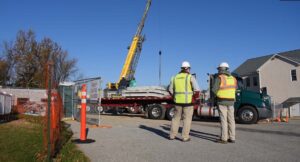Why It’s Essential to Clarify Your Construction Project’s Scope of Work
 Scope of work documents may be only a few pages long, but the information it contains is essential to the success of your construction project. Taking the time to clarify this document can save you time and money, and it can also lead to a better end result.
Scope of work documents may be only a few pages long, but the information it contains is essential to the success of your construction project. Taking the time to clarify this document can save you time and money, and it can also lead to a better end result.
What Is a Scope of Work?
A scope of work is a written document that outlines what activities are included in your construction project. As part of the contract documents, it describes a project’s objectives, milestones, deliverables, and outcomes. It also outlines the responsibilities of the project team, as well as the terms, conditions, and requirements.
In other words, the scope of work should have a detailed breakdown of all the specific activities needed to complete the project successfully.
It’s worth noting that you may have more than one scope of work. The design team may present an architect-engineer scope, and the construction team should present a construction process scope. In this blog, we’ll be focusing on the construction process scope specifically, but the importance of a detailed scope applies across the board.
Overall, the scope of work should lay out the owner’s expectations for the completed project. With a scope of work that’s clearly defined, your contractor and construction team know what’s expected of them, and they can create a plan on how to best accomplish your project.
Who is Responsible for Creating a Scope of Work?
 Much like the construction project itself, a scope of work document is a product of collaboration. The project’s owner will work closely with the construction team to communicate their needs and expectations. The construction team will then translate the owner’s stipulations into deliverables and milestones, thus creating the scope of work.
Much like the construction project itself, a scope of work document is a product of collaboration. The project’s owner will work closely with the construction team to communicate their needs and expectations. The construction team will then translate the owner’s stipulations into deliverables and milestones, thus creating the scope of work.
Most construction teams will take on the brunt of the work to develop the document, with many having scope of work templates they’ll customize to fit your project. However, weigh-in from the owner is essential when creating the document. The scope of work is an agreement between both parties, and to ensure it reflects everyone’s expectations, collaboration is key.
Expect that your contractor will send you a drafted scope. You’ll be able to make revisions and ask questions, and then the final scope will be created.
What Information is in a Scope of Work?
A scope of work for a construction project may be broken down by divisions or by rooms. From there, the specific activities that need to occur in each will be listed below. These lists should clarify who is responsible for removing and disposing of existing material (if appropriate), and who is responsible for procuring and installing the new material.
The scope of work should also cover general conditions, detailing who is responsible for temporary utility services, portable restrooms, safety fences, daily clean-up, and other such items. It may also mention builders’ risk insurance, on-site supervision, soil testing, project signage, and more.
It’s important to note that your construction team is only contractually responsible for what is included in the scope of work. Some documents may include a heading titled “exclusions”, which outlines items specifically not included. These could be activities you’ve directly contracted another company to do (for example, you have a prime contract with an excavator for sitework). It can also include work that’s not expected on the project, but isn’t out of the realm of possibility, like asbestos abatement, rock removal, or soil remediation.
In other words, it’s important to also consider what isn’t listed in the scope of work. Before signing off on the document, be sure you have a clear understanding of all the inclusions and exclusions.
As you can see, a scope of work is more than just a checklist for a contractor. It provides detailed communication and documentation to indicate the specific work being completed, who is responsible for the work, and who will pay for the work. It should clearly communicate the expectations of both the owner and the construction team. Your careful review and understanding of the scope of work are critical.
Why Clarifying the Scope of Work is Essential
 When it comes to this essential project documentation, clarity is the key.
When it comes to this essential project documentation, clarity is the key.
Getting specific about your expectations leaves less open to interpretation. This makes it easier for your construction team to complete your project the way you want it to. Doing so will help your project by:
- Avoiding Mistakes and Re-Works
The clearer the expectations in the scope of work, the less likely your contractor will have to correct work already put in place. While correcting work is important, it can cost both time and money. Determining whose responsibility those costs are can put unnecessary stress on a working relationship. - Ensuring Material & Equipment Arrive on Time
Especially in our current supply chain climate, planning ahead is one of the best ways a contractor can complete your project on time. With a clear scope of work, they can lay out and schedule deliveries so essential components arrive on time. Otherwise, items with long lead times could potentially hold back essential work. - Lining Up the Right Talent
Getting the right manpower on-site at the right time is key to keeping the project on track. This becomes complicated without a clear scope of work. As subcontractors and partners are booked months out, it could be challenging to get the talent the project needs without advanced planning.
What if I Want to Change the Scope of Work During the Project?
While creating a clear and accurate scope of work is one of the most important things you can do before the project starts, it’s not set in stone.
A scope of work can be a living and breathing document, changing as the project progresses to create a space that meets your current and future needs in the best possible way. To do so, you’ll create a change order. Change orders are written amendments to the scope of work that both the owner and the contractor agree to.
That said, making changes once construction has begun almost always leads to higher costs and delayed schedules. Construction projects require multifaceted project planning and management, with future activities dependent on the completion of previous ones. Adding changes can throw off this plan, necessitating the team to retool the schedule, skilled labor, and resources.
Before making a change order, you’ll want to be sure that it is worth what it will cost. In many cases it is, and your construction team should do what it takes to ensure you’re content with the completed project. But whenever possible, it’s best to do what you can to avoid them. Work with your construction team before the project starts to ensure your vision for the project is properly reflected in the scope of work.
One way to do this is to opt for design-build as your project delivery method. A design-build approach has been shown to greatly reduce the need for change orders, thanks to its emphasis on collaboration with the entire project team early in the construction process.
Check out our blog to learn more about the design-build project approach.
A Detailed Scope = An Attentive Team
From avoiding mistakes to more efficient planning, having a clear and detailed scope of work sets your project up for success. What’s more, a contractor who creates a clearly defined scope likely has the experience, attention to detail, and attentiveness needed to make your project a success.
At Horst Construction, creating a clear, detailed scope of work is one of the first steps to turning your vision into a fully functional, long-lasting building.
Let us prove it to you! Request your free project consultation today.
Posted March 22, 2022

